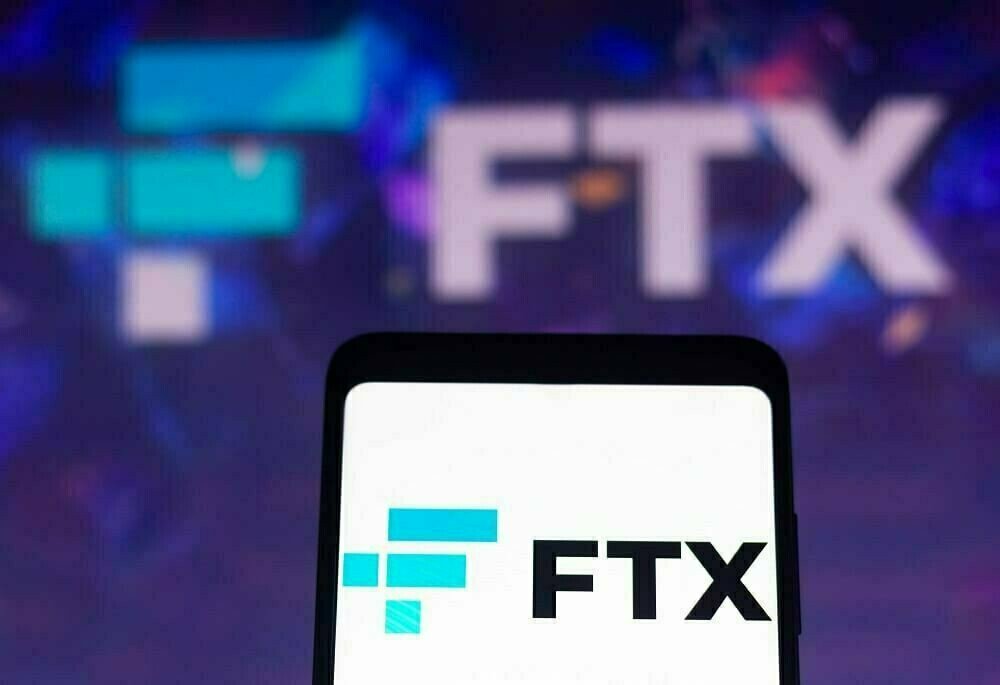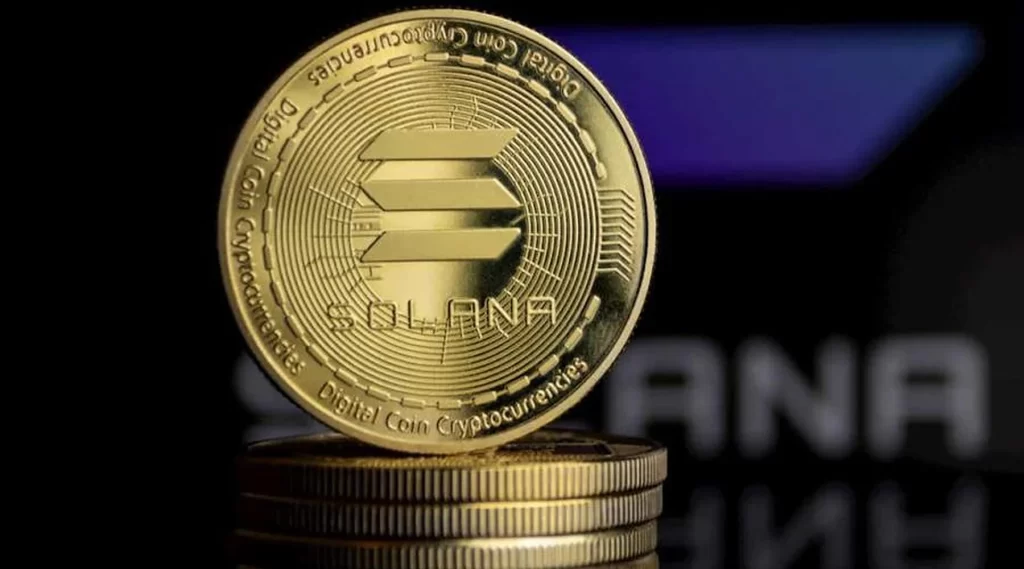On December 21, amidst Bitcoin’s struggle to breach the $45,000 resistance level, large-cap altcoins like Solana and Avalanche emerged as frontrunners in the crypto market.
Bitcoin had faced resistance at $45,000 since its initial surge on December 5, resulting in a slight pullback in its market dominance from 53.95% to 53.17%.
Meanwhile, altcoins witnessed a surge in market dominance (TOTAL2).
Technical analysts often interpret a drop in Bitcoin dominance combined with BTC’s sideways trading as a potential indicator for an altcoin breakout.
Furthermore, market sentiment is influenced by the interplay between the U.S. Dollar Index (DXY) and Bitcoin’s price.
Presently, the DXY has declined by 1.56% in the month, while Bitcoin has gained 16.18% in the same period.
Many traders attribute the DXY’s reversal to comments from Federal Reserve Chair Jerome Powell and FOMC minutes hinting at possible interest rate cuts in 2024.
With the expectation of a spot Bitcoin ETF approval in Q1 2024 and the belief that the Fed’s interest rate hikes have ended, the crypto market sentiment leans toward euphoria.
READ MORE; Singapore Court Freezes Over $1 Billion in Assets of Crypto Hedge Fund Founders
Solana and Avalanche have notably surged in price during this period, with SOL becoming the fourth-largest cryptocurrency by market capitalization, surpassing XRP. SOL’s rise can be attributed to several factors, including improvements in the Solana network’s user experience, particularly for token and NFT launches.
Solana’s focus on mobile accessibility and low transaction costs has attracted users prioritizing ease of use over decentralization, making it a strong competitor against Ethereum.
SOL’s recent rally is further fueled by the excitement surrounding airdrops, the listing of the SPL token JITO on major exchanges, and the subsequent success it achieved, with a market capitalization exceeding $300 million shortly after launch.
Additionally, SOL’s growth is supported by the increasing adoption of decentralized applications (DApps) on the Solana network.
Over three weeks, the total value locked (TVL) in Solana surged from $654 million to $1.28 billion, marking a remarkable 96% increase.
Similar trends can be observed in the Avalanche ecosystem, where an influx of DApp users, various DeFi protocol incentives, and persistent rumors of airdrops have led to increased inflows, daily active users, and an upward trajectory in the price of AVAX.
These developments highlight the growing prominence of Solana and Avalanche as they make strides in the competitive cryptocurrency market.
Coinbase shares are emerging as a potential strategic tool for traditional financial institutions seeking comprehensive exposure to the cryptocurrency sector, according to Will Clemente, co-founder of Reflexivity Research.
Clemente highlighted this perspective during an interview with Bitcoin advocate Anthony Pompliano on December 21.
He suggested that traditional finance firms might consider Coinbase (COIN) as an “index play” for the crypto industry due to its diverse range of offerings.
In Clemente’s view, investors entering the cryptocurrency space who are unsure about which digital assets to choose may find Coinbase an attractive option.
The exchange’s multitude of services and extensive asset selection can provide a relatively secure avenue for broad crypto exposure.
Matt Hougan, the Chief Investment Officer of Bitwise, a cryptocurrency asset management firm, also expressed optimism about Coinbase’s future during the same discussion.
Bitwise recently predicted that Coinbase’s revenue would double by 2024, but Hougan hinted that this estimate might be conservative, emphasizing the company’s impressive execution in the financial services sector.
READ MORE: OKX Urgently Addresses Critical iOS App Security Vulnerability in Response to CertiK’s Warning
Bitwise operates the Bitwise Crypto Industry Innovators exchange-traded fund (ETF), which holds Coinbase shares as part of its portfolio.
While Wall Street tends to view Coinbase primarily as an exchange, Clemente pointed out that the company has diversified its revenue streams by venturing into staking, serving as a Bitcoin ETF custodian, and acquiring a stake in Circle.
Additionally, Coinbase introduced its Ethereum layer-2 solution named “Base” in August.
Despite these positive developments, Coinbase faces challenges on multiple fronts. It is currently embroiled in a contentious lawsuit with the United States Securities and Exchange Commission (SEC).
Moreover, several U.S. senators are actively working on legislation that could impose restrictions on cryptocurrency activities within the country, potentially impacting Coinbase’s operations.
Coinbase’s “Base” platform has also experienced security issues, with incidents like the $6.5 million Magnate Finance rug-pull and an $865,000 exploit on RockSwap.
Additionally, ARK Invest, managed by Cathie Wood, recently sold 237,000 Coinbase shares worth $331 million across three different funds on December 5.
Data from ARK CEO Cathie Wood’s official website reveals that the ARK Innovation ETF has sold over 900,000 Coinbase shares since December, signaling a shift in the investment landscape surrounding the exchange.
Ikigai, an asset management firm that suffered significant losses when its hedge fund was tied to the collapsed FTX exchange, recently disclosed that it has opted to sell its claim in the exchange’s bankruptcy proceedings.
This decision was shared by Ikigai’s Chief Investment Officer, Travis Kling, in a post on X (formerly Twitter) on December 22.
Kling revealed that Ikigai successfully sold its $65 million claim related to FTX because the offered price exceeded their expectations.
Although he did not specify the exact sale price, reports indicate that creditors might receive up to 73 cents on the dollar – a remarkable figure since FTX’s downfall in November 2022.
Kling shed light on the rationale behind their decision, emphasizing the concept of opportunity cost.
He explained that they weighed the potential future increase in the claim’s value against the immediate cash gain and the opportunity to reinvest it elsewhere for returns.
With the cash proceeds from the claim sale now in hand, Ikigai’s investors have the option to redeem from the fund, but Kling noted that the majority of the capital will remain invested.
READ MORE: Brazil Overtakes Nigeria in Bitcoin Interest Rankings as Stablecoins Gain Favor
Regarding the much-anticipated FTX 2.0, Kling expressed initial interest but expressed disappointment in the slow and problematic progress of the project, leading them to move away from their claim.
Over a year after FTX and its subsidiaries filed for bankruptcy, lawyers and brokers are urging affected users to consider selling their claims.
This option offers a quicker way for retail investors to recover some of their lost funds, compared to waiting potentially months or years for compensation from FTX debtors.
Some creditors have expressed a preference for receiving funds early so they can invest in cryptocurrencies, potentially capitalizing on a bull market.
However, this choice may come at the cost of missing out on a higher payout if FTX’s bankruptcy case ultimately concludes with more favorable terms.
Various firms, including Cherokee Acquisition and Open Exchange, are facilitating cash transactions for FTX claims.
Additionally, the bankruptcy claims platform Found reported that an FTX creditor used their claim as collateral for a loan within the decentralized finance (DeFi) protocol Arcade, highlighting the innovative solutions emerging within the cryptocurrency ecosystem.
In the midst of a burgeoning crypto marketing showdown, the spotlight has recently fallen on Bitcoin exchange-traded fund (ETF) issuers who have unleashed a flurry of crypto advertisements, marking a total of three within a mere two days.
The first salvo was fired by Bitwise on December 18th when they unveiled their Bitcoin ETF advertisement.
Featuring none other than the renowned actor Jonathan Goldsmith, famous for his portrayal of the “Most Interesting Man in the World” in a Dos Equis beer campaign, this ad sought to capture the audience’s attention.
Not to be outdone, Hashdex joined the fray on December 20th with their own crypto advertisement.
Their offering featured a dumper truck emblazoned with the bold captions, “Stocks aren’t crypto, fixed income isn’t crypto, precious metals? nope, not crypto either,” before highlighting their own firm.
Bitwise, determined to maintain the momentum, swiftly responded on the same day with another short ad featuring Goldsmith.
In character, he humorously remarked, “Thought you would like to know, Satoshi sends his regards,” while continuing to promote Bitcoin.
Despite the spirited competition, the prevailing sentiment on social media was that Bitwise’s advertising campaign had emerged victorious.
READ MORE: Improbable’s Sale of The Multiplayer Group to Keywords Studios Marks Metaverse Industry Milestone
This marketing blitz by asset managers is particularly noteworthy as it reflects a high level of confidence in a financial product still awaiting regulatory approval.
Currently, there are 13 pending spot Bitcoin ETFs, with analysts estimating a 90% likelihood of approval by the SEC by January 10th.
Samson Mow, CEO of JAN3 and a Bitcoin pioneer, weighed in on the significance of these marketing campaigns for Bitcoin ETFs.
Mow emphasized that companies vying for a spot in the Bitcoin ETF space are engaged in fierce competition for investors, inflows, and assets under management, with branding as their primary weapon.
He predicted, “This battle for the Bitcoin orange glow is going to heat up like you can’t imagine.”
Mow hinted at future campaigns from industry giants like BlackRock and Fidelity, envisioning endorsements from figures like Novak Djokovic and Michael Saylor, which would further intensify the marketing frenzy surrounding Bitcoin ETFs.
Solana, the cryptocurrency that has been making waves in the digital asset space, has experienced a remarkable 18% surge in its price over the past 24 hours.
This surge has propelled Solana to a significant milestone – reclaiming the fourth position in market capitalization. This achievement marks the first time Solana has reached this rank in over two years.
As a result of this impressive rally, Solana’s market capitalization now stands at a substantial $41.9 billion, surpassing Binance Chain’s BNB market capitalization of $41.8 billion.
The current price of SOL, Solana’s native token, sits comfortably at $98.40, reflecting an impressive 18% increase within the span of a single day.
Just a day before this development, on December 21st, Solana had already overtaken XRP in terms of market capitalization.
This surge is part of an ongoing trend for SOL, as it has surged by over 30% in the past week, outperforming other major cryptocurrencies in the same timeframe.
Despite often being referred to as the “ETH killer” by its supporters, Solana still has a substantial gap to close to catch up to Ethereum, which boasts a market capitalization of $269 billion.
READ MORE: OKX Urgently Addresses Critical iOS App Security Vulnerability in Response to CertiK’s Warning
Solana’s last stint in the fourth position was in November 2021, during the peak of the previous bull market cycle, with a market capitalization of $75 billion, still trailing behind BNB’s $108 billion.
Remarkably, Solana’s price closed out 2022 at just under $10, primarily due to its association with the now-defunct FTX exchange and former crypto billionaire Sam Bankman-Fried.
Fast forward a year, and SOL has surged to almost $100, establishing itself as one of the standout performers among crypto assets for the year.
The surge in Solana’s popularity is further evidenced by the significant increase in Google searches related to the cryptocurrency, nearly rivaling those of Ethereum in the United States.
However, amidst this euphoria, technical analysts have issued a word of caution, warning of the potential for a major market correction before the year concludes.
On December 21st, the Solana team celebrated their accomplishments and looked back on the year in their “Solana Solstice” event.
The event highlighted various milestones, including the Bonk (BONK) hype, the launch of the Saga mobile device, integration with artificial intelligence, and valuable institutional partnerships.
Solana’s recent surge marks a remarkable chapter in its ongoing journey in the world of cryptocurrencies.
Elon Musk’s ambitious “everything app,” formerly known as Twitter and now called X, is gearing up to launch in-app payment services on its social media platform around mid-2024.
In a recent conversation with Cathie Wood of ARK Invest in a virtual X space on December 21st, Musk shared his expectations for the launch timeline.
He expressed optimism that the payment services would be fully operational by the “middle of next year,” contingent on the approval of several money transmitter license applications.
Musk acknowledged that he had hoped to introduce payments on the social media platform sooner but was slowed down by bureaucratic processes.
He stated that he was not aware of any significant obstacles that might lead to the rejection of their money transmitter license applications.
Musk also admitted that X had been “a bit late” in submitting all the required documentation.
Many crypto enthusiasts had been eagerly awaiting news of potential cryptocurrency integration, such as Dogecoin or Bitcoin, into X’s payment services.
However, Musk has never confirmed such integration and has recently displayed a diminished interest in digital assets, remarking that he spends “hardly any” time contemplating cryptocurrencies.
READ MORE: Singapore Court Freezes Over $1 Billion in Assets of Crypto Hedge Fund Founders
Despite this apparent disinterest in crypto, Tesla, under Musk’s leadership, still holds approximately $148 million worth of Bitcoin on its balance sheet, and the company permits customers to use Dogecoin for purchases in the Tesla Shop.
In addition, reports from 2022 suggested that Musk’s tunnel construction firm, The Boring Company, began accepting Dogecoin for rides on its Las Vegas transit system.
When asked about his thoughts on cryptocurrency, Musk explained that he envisions money and digital assets as a “database for resource allocation.”
He stated that fiat currency is “actually fine” as long as state actors do not attempt to debase the currency by manipulating its supply.
Regarding artificial intelligence, Musk mentioned that one of the primary development goals for his Grok AI system was to make it the most humorous large language model.
He suggested that users would enjoy the AI’s responses, even when asking for a “vulgar roast.”
Musk’s multifaceted endeavors continue to capture attention and curiosity, with X’s impending payment services launch being one of the latest developments in his ever-evolving technological landscape.
On December 21st, Bitcoin made headlines as it surged to around $44,000 just before the Wall Street opening bell. Experts had been anticipating a correction in the Bitcoin price, and this move seemed to confirm their expectations.
Market data from Cointelegraph Markets Pro and TradingView revealed that Bitcoin had broken out of its one-week trading range.
A day earlier, it reached a high of $44,300 before experiencing a reversal. Despite this correction, Bitcoin had still managed to maintain a 6% increase for the week.
Stockmoney Lizards, a trading team, noted in their latest market update on social media platform X (formerly Twitter) that although a correction seemed necessary, Bitcoin’s chart remained strong across all timeframes.
They also observed that Bitcoin appeared to be forming an ascending triangle with a retest of the upper resistance line around $44,000.
Like many in the crypto community, Stockmoney Lizards were closely watching the upcoming decision regarding the United States’ first Bitcoin spot price exchange-traded fund (ETF), scheduled for January 10th.
They believed that Bitcoin could continue to rise until the ETF decision was announced, setting a near-term target of $48,000.
READ MORE: Spot Bitcoin ETF Approval: A Potential Game-Changer on Wall Street, Says Michael Saylor
However, they also cautioned that even if the announcement was positive, it might trigger a “buy the rumor, sell the news” event.
This sentiment was echoed by trading firm QCP Capital, which anticipated a “sell the news” scenario in the second week of January, regardless of the ETF outcome.
QCP Capital expected Bitcoin to face resistance in the $45,000 to $48,500 range and potentially retrace to levels around $36,000 before resuming its uptrend.
While Stockmoney Lizards considered this scenario less likely, they pointed out that the market was in a heated state and a correction could be beneficial.
They suggested that if Bitcoin dropped below $40,000, it might lead to the liquidation of leveraged long positions and a retracement towards $38,000.
Factors such as the need for a correction after a rally, year-end sales (tax loss selling), and reduced trading activity during the holidays supported this argument.
Despite these various scenarios, market data indicated that many traders were poorly positioned for Bitcoin’s recent push above $44,000.
On December 20th, over $100 million in crypto short positions were liquidated, including $38.5 million in Bitcoin short positions, according to statistics from CoinGlass.
The Federal Deposit Insurance Corporation (FDIC) of the United States has taken a significant step by adopting a new rule that will impact the way certain crypto firms can advertise and present themselves to the public.
In an announcement made on December 20, the FDIC revealed that its board of directors has finalized regulations aimed at preventing “false advertising, misrepresentations of deposit insurance coverage, and misuse of the FDIC’s name or logo.”
This move comes after a long period since the last significant update to the FDIC’s sign and advertising rules, which occurred in 2006.
One of the most visible changes resulting from this rule is the requirement for institutions insured by the FDIC to display a new black and navy blue sign, instead of the gold and black sign that has been in use since the 1930s.
This new sign will need to be prominently displayed on all websites and apps, brick-and-mortar bank locations, and certain ATMs, and these changes will come into effect starting in the year 2025.
While the FDIC has emphasized that these updates are not specifically targeting the crypto industry, it is no secret that there has been rampant abuse within the crypto space, with certain entities misleading customers into believing that their funds were FDIC-insured.
READ MORE: Solana Memecoin Trader Turns $226,000 into $1.6 Million in Just Five Days
Dennis Kelleher, the president and CEO of the nonprofit organization Better Markets, welcomed the FDIC’s actions and stated that it was necessary to update and strengthen the rules to address this misconduct.
Notable crypto firms like Gemini Earn, FTX US, and Voyager Digital have faced allegations of misleading investors regarding FDIC insurance.
In recent times, the crypto industry has faced increased scrutiny, especially after several banks with ties to crypto firms faced collapse, were closed by authorities, or voluntarily liquidated in 2023.
The FDIC had to work closely with the New York State Department of Financial Services to address these issues, including the closure of Signature Bank.
Furthermore, in June, the Consumer Financial Protection Bureau issued a warning regarding payment apps that facilitate crypto transactions, highlighting the potential lack of FDIC insurance, which could put user funds at risk.
Overall, the FDIC’s decision to update its rules and regulations regarding advertising and signs is a crucial step in ensuring that consumers are not misled by crypto firms regarding the protection of their funds.
The FDIC has recognized the unique challenges posed by the crypto industry, referring to it as a source of “novel and complex risks” to U.S. banks due to its uncertain legal and regulatory status.
Brazil has displaced Nigeria as the second-ranked nation in terms of Bitcoin interest, according to data from Google Trends.
El Salvador has maintained its position as the leader in this ranking.
The shift suggests a changing landscape in cryptocurrency preferences as Bitcoin’s popularity surges in Brazil, Latin America’s most populous country.
El Salvador’s continued dominance in Bitcoin interest can be attributed to its unwavering commitment to the cryptocurrency.
On December 7th, the El Salvadoran government, in collaboration with stablecoin issuer Tether, introduced the Freedom Visa program.
This initiative allows for citizenship by donation, granting residency and a pathway to citizenship to individuals contributing a $1 million donation in either Bitcoin (BTC) or Tether (USDT) to the country.
In Brazil, the country’s largest private bank, Itau Unibanco, entered the cryptocurrency arena by offering cryptocurrency services, starting with Bitcoin and Ether trading.
This move came following a series of regulatory changes in the Latin American cryptocurrency landscape.
In contrast, Nigeria has seen a shift in its cryptocurrency landscape, with a growing preference for stablecoins, particularly the USDT, over Bitcoin.
READ MORE: Solana Memecoin Trader Turns $226,000 into $1.6 Million in Just Five Days
This preference is driven by the stability of stablecoins, as they are pegged to the widely accepted U.S. dollar, offering a hedge against inflation and the devaluation of the Nigerian naira.
Stablecoins are not only chosen for their stability but also for their profitability.
According to the 2023 Geography of Cryptocurrency Report by Chainalysis, peer-to-peer trading volumes of the naira against USDT have witnessed a significant surge in 2023, more than doubling the initial rate.
Despite facing challenges, Nigeria’s cryptocurrency market continues to be a vital transactional tool in the sub-Saharan region.
However, it is gradually losing its prominence to more crypto-friendly countries such as the United Kingdom, the United Arab Emirates, and Brazil.
Nigeria remains a leader in cryptocurrency adoption in Africa and globally, experiencing an impressive 9% annual growth rate, as per a Chainalysis report.
Despite recent declines in Bitcoin interest, Nigeria remains among the top three countries with consistent growth since 2021.
As the cryptocurrency landscape continues to evolve, these rankings may see further shifts in the coming years, reflecting changing preferences and regulatory dynamics in different regions.
A recent survey conducted by Variant and Union Square Ventures has shed light on a significant shift in compensation trends within the crypto industry, indicating a growing preference for equity over tokens among new hires.
This survey, aimed at understanding emerging trends in 2023, involved the assessment of businesses in the investment portfolios of these two crypto companies.
The data was gleaned from conversations with employees at 32 Web3 startups, and it revealed a notable departure from the past practice of compensating employees with tokens rather than equity.
Historically, Web3 firms had been offering token-based compensation since 2013, with virtually no instances of equity compensation before 2018.
Over the years, less than 40% of surveyed employees received equity, while approximately 50% were remunerated with tokens.
However, 2023 marked a turning point, with a significant shift towards new hires being three times more likely to receive equity rather than tokens.
While it may be too early to definitively label this shift as a trend, the data strongly suggests that startups are exploring alternative incentive mechanisms that are less reliant on tokens than in previous crypto market cycles.
This evolution highlights the dynamic nature of the crypto industry, as it continually adapts and matures.
READ MORE: Singapore Court Freezes Over $1 Billion in Assets of Crypto Hedge Fund Founders
The survey also offered insights into the competitive landscape for talent acquisition within the crypto space.
About 50% of respondents indicated that their primary competition for new hires came from other crypto startups, while 25% identified Web2 organizations as their main competitors.
Interestingly, the data suggested that recruiting within the Web3 space is more feasible during a bear market compared to attracting newcomers to the crypto industry during bullish periods.
Within the startups surveyed, engineers constituted the majority of the workforce, making up 50% of the staff.
These engineers were found to receive higher compensation than their peers within the company and even compared to professionals outside the crypto sector.
The survey noted that senior-level Web3 engineers commanded a 23% premium in their earnings, while early-career engineers earned 27% more than their counterparts in the general job market.
In conclusion, the survey by Variant and Union Square Ventures highlights the changing landscape of compensation within the crypto industry, with equity gaining prominence over tokens among new hires.
This trend, though in its early stages, signifies a shift in the industry’s approach to incentivizing its workforce and reflects its ongoing evolution.












